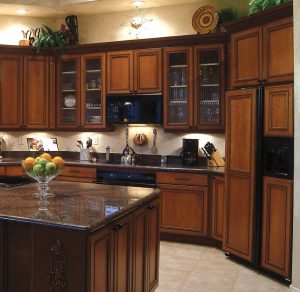Home Improvement Leads are an essential part of a renovation business. Home improvement pros must focus on generating quality leads, cultivating relationships, and converting those leads into customers.

Homeowners searching for a contractor want a provider they can trust. To do that, use benefits-first marketing to resonate with prospects.
Home improvement contractors can use a variety of tactics to generate leads, including online lead aggregators, local business groups, social media marketing, targeted paid ads, and referrals. Often, using a specialised tool, such as SaveMyLeads, allows these strategies to be optimised for maximum efficiency and effectiveness. This type of streamlined approach can help improve conversions, elevate revenue, foster customer loyalty, and adapt to market changes for long-term success.
When it comes to generating quality leads for your home improvement or home services business, networking is key. You can connect with potential customers by joining industry-specific or national trade organizations and networking events, which can provide opportunities to introduce yourself and discuss your services in an informal setting. Additionally, you can partner with other businesses that provide complementary services to yours to expand your reach and boost your business. For example, a home improvement contractor can partner with a lawn care company to offer landscaping services to their clients or with a pest control company to provide rodent removal services to their customers.
A reputable website is another essential tool for attracting high-quality home improvement leads. It should feature eye-catching content, such as before and after photos of previous renovation projects. In addition, it should also include a contact form or appointment booking system to enable homeowners to easily schedule an estimate. Additionally, a website should display client testimonials and case studies to establish credibility and increase trust.
Despite the recent dip in home remodeling spending, it is still important to invest in SEO and other digital marketing efforts. This will improve your chances of ranking on Google, which can result in more traffic to your website and ultimately more high-quality home improvement leads.
While a lot of people may be looking to improve their homes in the coming months, you should continue your lead generation campaigns throughout the year. This way, you will have a steady stream of new leads even after the holidays and when remodeling activity declines. Ensure that your leads are qualified by using strategies such as lead sharing, email nurturing, and implementing a CRM. By doing so, you will be able to convert more of your leads into paying customers.
Referrals
One of the fastest ways to generate leads is through paid advertising on search engines and social media. This strategy can target specific demographics and ensure that your ads are seen by people who are interested in remodeling services. In addition, tapping into existing clients for referrals is another effective way to quickly increase your client base. Just be sure to offer an incentive to attract clients and make the process of referring business easy.
Creating quality content and sharing it on your social media platforms is another great way to find high-quality contractor leads. You can use this strategy to promote your services, showcase your work, and highlight the benefits of working with a home improvement contractor. This is also a great way to position yourself as an industry expert and thought leader, which will ultimately lead to increased leads and sales.
Another way to generate high-quality contractor leads is by offering referral bonuses to satisfied clients. This can be anything from a gift card to a local restaurant or store to a discount on future remodeling projects. The more attractive your incentive, the more likely your clients are to refer your services to their friends and family.
When it comes to finding new home improvement clients, generating referrals can be challenging. However, there are a number of tried and true strategies that can help your remodeling business grow without breaking the bank. These strategies include improving your local SEO, partnering with other home remodelers, and utilizing marketing automation tools.
Using these marketing strategies will allow you to create a steady stream of high-quality leads and grow your home remodeling business. You can further streamline your home improvement lead generation process by implementing a reliable lead management tool. For example, a system like Aktify can provide you with AI-powered small business services that respond to leads, qualify prospects, follow up with potential clients, and more. This can save you time and money by ensuring that no potential lead slips through the cracks.
Local Business Groups
Many homeowners turn to local groups on social media for inspiration and recommendations. Find groups that are centered around renovation and homeownership and join them. This is where you’ll find potential customers, who are looking for contractors to help them with their upcoming projects.
The key is to avoid overselling or pestering members of the group with your services. Be sure to provide value by sharing industry insights and offering advice on common problems. This will establish you as a trusted expert within the community.
Whether you need general construction leads, niche project lead lists or other specific types of home improvement contractor leads Salesgenie delivers laser-focused lists that align with your exact business goals. We use 175+ selection filters to deliver high-potential prospects ready to hire a contractor.
Strategic Partnerships
Home improvement leads are crucial for growing your remodeling business, but not all methods of generating these leads are equally effective. It’s important to explore multiple strategies and to find the ones that are best suited for your company. Using these tips, you can grow your business and increase the number of quality contractor leads.
Strategic partnerships are a great way to generate new home improvement leads. These connections can provide you with valuable information about the local market and the type of work that is needed. Partnering with other businesses can also help your company build credibility and trust among potential customers.
Creating a content marketing campaign is another effective way to generate home improvement leads. This involves creating a series of useful resources for homeowners, such as guides to planning a home remodel or checklists for hiring a contractor. Then, you can promote these resources on your website and social media channels. When a homeowner signs up to receive your content, you’ll have their contact information and can nurture them through the sales process.
Another way to generate high-quality home improvement leads is by partnering with a professional remodeling lead generation service. These services can save you time and money by connecting you with homeowners who are actively searching for your services. They can also help you develop a targeted and consistent lead-generation strategy.
Whether you want to generate new home improvement leads through networking, leveraging referrals, or using professional remodeling lead generation services, you must be diligent and follow best practices. Otherwise, you could waste money and your business could suffer. By following these simple tips, you can improve the likelihood of converting home improvement leads into paying clients.


